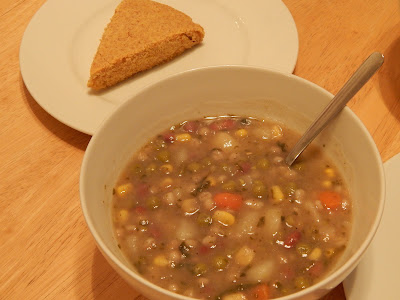Cultivating an Interior Life
 |
| Mount Angel Abbey, Oregon Photo by Angela Marie Morton |
“Interior life” is a term that I have frequently seen referenced in my readings of different religions and philosophies, but it is only in the past few years that I have finally begun to apply and incorporate what I have learned from my ongoing studies. I did not intentionally create a deliberate practice of “cultivating an interior life”, but I believe that my natural inclinations led me there.
Only so much can be gained academically from reading and studying, and there comes a point when a shift of focus, from absorbing knowledge to mental and physical practice, is necessary. It is what the Buddha meant by not mistaking the “finger pointing at the moon” for the moon itself. The texts and scriptures are useful and valuable, but are not ends in themselves. Practical application in daily life is required to live out the teachings and principles, fully and authentically.
Art, at least for me, has many parallels to a spiritual path. As is the case with spirituality, art books and theory are important, but time spent on the work itself is required to develop skills, and to grow creatively. I have found that through pursuing both a spiritual path and an artistic path concurrently, and cultivating a rich, spiritually-focused interior life, creativity is nurtured, and is able to be expressed more freely, because external and societal “success” becomes less important than doing the work for its own sake. “Success” is a goal, to be sure, but it is not the goal.
There are different definitions of the term “interior life” depending on the spiritual tradition or philosophical branch being studied or followed, but in general, it means living a life centered on the presence and love of God with an emphasis on prayer or, in more secular terms, it is the concept that our external worlds are reflections of our internal lives.
Regardless of the particular definition, there are two consistent themes, regardless of the path:
The first is, the benefit that comes from living a life independent of external forces and stimuli, and instead remaining centered on an awareness of, and perhaps even a devotion to, something higher than yourself. Such an awareness serves as an inspiration to live a life of compassion, love, and service, rather than a life centered on praise, criticism, and material gain.
The second is, acknowledging that God is embodied in everyone and everything, and that all the activities of your daily life, from making a cup of tea, to honing a craft, to caring for a loved one, to sitting alone in meditation, creates opportunities to honor the divine within all things and all beings. That sense of divine connection can transform everyday tasks into acts of service and devotion.
Both spirituality and creativity are difficult subjects to discuss without getting philosophical and analytical, and cannot be summed up in a brief essay, or thoroughly explained in a multi-volume text. “Less is more” is one of my guiding principles, and these subjects are no exception. Anything of true value cannot be put adequately into words, but what I can say is that, for myself, having a fulfilling interior life has given me clarity but also more questions, conviction as well as uncertainty, and a sense of connection balanced with a healthy non-attachment to outcomes.
February’s post will be a recipe, so if you are interested in simple, vegan eats, you will want to check back next month!


